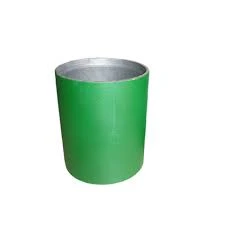- Afrikaans
- Albanian
- Amharic
- Arabic
- Armenian
- Azerbaijani
- Basque
- Belarusian
- Bengali
- Bosnian
- Bulgarian
- Catalan
- Cebuano
- Corsican
- Croatian
- Czech
- Danish
- Dutch
- English
- Esperanto
- Estonian
- Finnish
- French
- Frisian
- Galician
- Georgian
- German
- Greek
- Gujarati
- Haitian Creole
- hausa
- hawaiian
- Hebrew
- Hindi
- Miao
- Hungarian
- Icelandic
- igbo
- Indonesian
- irish
- Italian
- Japanese
- Javanese
- Kannada
- kazakh
- Khmer
- Rwandese
- Korean
- Kurdish
- Kyrgyz
- Lao
- Latin
- Latvian
- Lithuanian
- Luxembourgish
- Macedonian
- Malgashi
- Malay
- Malayalam
- Maltese
- Maori
- Marathi
- Mongolian
- Myanmar
- Nepali
- Norwegian
- Norwegian
- Occitan
- Pashto
- Persian
- Polish
- Portuguese
- Punjabi
- Romanian
- Russian
- Samoan
- Scottish Gaelic
- Serbian
- Sesotho
- Shona
- Sindhi
- Sinhala
- Slovak
- Slovenian
- Somali
- Spanish
- Sundanese
- Swahili
- Swedish
- Tagalog
- Tajik
- Tamil
- Tatar
- Telugu
- Thai
- Turkish
- Turkmen
- Ukrainian
- Urdu
- Uighur
- Uzbek
- Vietnamese
- Welsh
- Bantu
- Yiddish
- Yoruba
- Zulu
coupling for tubing
Coupling for Tubing Understanding Its Importance and Applications
In the realm of oil and gas, mining, and various industrial applications, tubing is a critical component. It serves as the lifeline for transporting fluids, gases, and other materials from one point to another. Ensuring that this pipeline operates efficiently and safely is paramount, and this is where coupling becomes significant. Couplings are essential devices that join two pieces of tubing together, enabling smooth transportation without leaks or failures.
What Are Couplings?
A coupling is a mechanical device that connects two sections of tubing. Typically, couplings are designed to provide a secure connection that can withstand the stresses and pressures associated with the materials being transported. In the context of oil and gas, for example, the couplings must handle high-pressure environments and resist the corrosive nature of many hydrocarbons.
Types of Couplings
There are several types of couplings used in tubing applications, each suited for specific functions and material types.
1. Threaded Couplings These are the most common type and involve screwing two sections of tubing together. They provide a tight seal and are relatively easy to install and maintain. 2. Welded Couplings As the name suggests, welded couplings involve welding two pieces of tubing together. This method creates a very strong bond but requires skilled labor and specific equipment.
3. Flanged Couplings These couplings use a flange that allows for the easy bolting together of two tubes. Flanged connections are widely used in systems that require frequent disassembly, such as maintenance in industrial applications.
4. Union Couplings These couplings allow for easy separation of the two tubing sections without the need for additional tools. They are particularly useful in systems where parts need to be accessed regularly.
Importance of Coupling in Tubing Systems
The significance of coupling in tubing systems cannot be overstated. Here are several reasons that highlight its importance
coupling for tubing

- Safety Proper coupling ensures that the integrity of the tubing system is maintained. In oil and gas applications, for instance, a failure in coupling can lead to disastrous leaks or blowouts, jeopardizing not only equipment but also human lives.
- Efficiency An efficient and well-designed coupling minimizes friction and pressure loss within a system. This leads to more effective fluid transport, ultimately saving time and reducing costs.
- Flexibility Couplings allow for customization within a piping system. Depending on the requirements of a specific application, different types of couplings can be used to achieve the desired outcome.
- Maintenance With the right coupling, maintenance becomes more straightforward. Being able to quickly disconnect and reconnect tubing sections is vital for repairs or upgrades. Flanged and union couplings, for instance, offer easy access to different parts of the system.
Applications of Couplings in Various Industries
- Oil and Gas In this industry, couplings are essential for drilling operations, production pipelines, and refining processes. The high-pressure and corrosive environments necessitate carefully selected couplings that can withstand these conditions.
- Chemical Processing The safe transport of chemicals is crucial, and coupling systems must be resistant to reactive substances. Here, welded connections are often favored for their strength and leak-proof qualities.
- Water and Wastewater Management In this domain, couplings are extensively used in pipelines that transport potable water or manage wastewater. Durability and corrosion resistance are key considerations.
- Manufacturing In manufacturing settings, couplings may be used in various systems, from hydraulic lines to pneumatic systems. The ability to provide leak-proof connections in high-pressure applications is critical.
Conclusion
Couplings play an integral role in the functionality and safety of tubing systems across various industries. Understanding the different types of couplings, their importance, and their applications can help in selecting the right solution for specific needs. As technology advances, the development of more resilient and efficient coupling systems continues, ensuring that industries can operate safely and efficiently in an ever-demanding environment. Proper attention to coupling in tubing designs is a crucial step towards achieving optimal performance and safety in fluid management systems.
-
Well Casing Extension Couplings – Applications and InstallationNewsJun.06,2025
-
Types of Crossover Subs in Drilling & CompletionNewsJun.06,2025
-
Key Features of High-Quality Tubing Pup JointsNewsJun.06,2025
-
Installation and Maintenance Tips for Steel Couplings for PipeNewsJun.06,2025
-
How to Select the Right Pup Joint for Oil & Gas OperationsNewsJun.06,2025
-
Applications of Stainless Steel Pipe CouplingsNewsJun.06,2025







